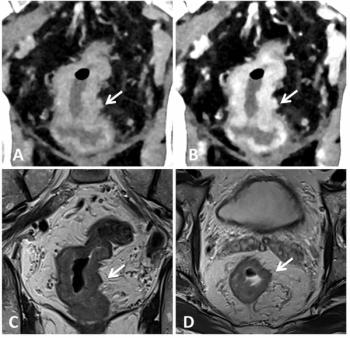
Virtual gadolinium safety tango enlivens Roentgen Ray meeting
Like other medical journalists, I can usually be found in the front rows of the radiology meeting lecture halls, dutifully taking copious notes. The American Roentgen Ray Society meeting in May was no exception. But this time I was also under a vow of silence for three weeks, after a vocal cord nodule diagnosis.
Like other medical journalists, I can usually be found in the front rows of the radiology meeting lecture halls, dutifully taking copious notes. The American Roentgen Ray Society meeting in May was no exception. But this time I was also under a vow of silence for three weeks, after a vocal cord nodule diagnosis.
One day, I caught a great session about nephrogenic systemic fibrosis, a rare skin disease linked to MRI gadolinium contrast injections. Dr. Emanuel Kanal, head of the American College of Radiology MR safety committee, explained that the most likely cause of NSF is transmetallation, the breaking of the bond between the toxic metal gadolinium and the ligand (or chelate), the part of the contrast agent that is supposed to block the ingredients escape.
Sitting up front, I was an easy target for an impromptu drama. I was assigned the part of the dutiful ligand, while "Manny" Kanal played the randy gadolinium with a wandering eye. Speechless in my seat, I played along as he whisked me away into an imaginary tango.
"The body is one great big dance floor," he said dramatically, swaying and clasping his hands together tightly to demonstrate the "Emily/Manny" bond.
Suddenly, Brian, another attendee seated up front and cast as body substances such as zinc and copper, arrives in Kanals narrative. While we are dancing, Brian, a handsome young dude, taps Mannys shoulder and says, "Excuse me, may I have this dance?"
"Presuming he is referring to Emily, I bow out, and Emily dances off with Brian. And that is exactly what we are trying to avoid," Kanal said ruefully.
There are enormous differences in the tightness of bonding for various agents, and macrocyclic types appear to be the most reliable.
"These guys [macrocyclics] can kiss goodbye any chance of leaving the prom," Kanal said. "Its not gonna happen. They are staying with the date they came with. They are encircled, ensnared. They are married."
Emily Hayes is feature editor of Diagnostic Imaging.
Newsletter
Stay at the forefront of radiology with the Diagnostic Imaging newsletter, delivering the latest news, clinical insights, and imaging advancements for today’s radiologists.



























